The Opinionated Gamers often have long and winding conversations. This one started with Stefan Feld’s Civolution, about which different OG members are variously excited or horrified. Civolution definitely seems to be a love it or hate it sort of concept from what I can tell.
After lots of back and forth about the virtues or terrors of Civolution, including questions as to whether Dale would ever agree to sit for such a long game, someone made the point that the worst kind of 2+ hour game is a multiplayer solitaire game with drafting in which no one cares what anyone else is doing, but you cannot plan ahead because the actions you can draft will change before your turn comes around. Another person suggested this sounded a lot like a description of Ark Nova, so a lengthy discussion of Ark Nova ensued.
This eventually morphed into a discussion of drafting, in which Larry and Patrick declared that drafting is essential to use in Terraforming Mars. Melissa and Fraser jumped in to share “The Melissa and Fraser School of Two-Player Terraforming Mars” — which involves always using Prelude, Colonies, and various maps, but never drafting (and only using Venus or Turmoil if they are planning a long game). From this point, many people jumped in to share their preferred recipe for mixing and matching expansions when they play Terraforming Mars… and we were off to the races.
As someone with lots of opinions about the best ways to expand Terraforming Mars (see Expanding Mars: A Guided Tour of the Red Planet and Beyond), I decided to create a handy-dandy chart to capture everyone’s preferences, and we put together this post to share a collective quasi-review of the many ways to experience Terraforming Mars. So how do you terraform?
Explain Yourself
Talia Rosen: I really enjoy playing Terraforming Mars with 2 players, but would hesitate with 3 players, and would almost certainly not ever play it with more people. This is why you’ll find it in my two-player Kallax cubes alongside games like Caylus and Through the Desert that shine at their smallest player count. I also only ever want to play with card drafting because I find the drafting decisions so interesting in the two-player game, and I only ever want to play with Colonies because I think it makes energy a much more interesting resource (except not with Luna because that seems like a ridiculous colony to play with). Colonies also makes the early game feel like a fun rush to get 3 energy production, which creates tension over whether to prioritize your cards or energy production. I absolutely loathed Turmoil, and I played it 3 times after my Kickstarter copy arrived, but it just changed the game too much and added too much overhead for so little payoff. I like rotating maps, and I wanted the new maps but canceled my pledge on the latest Kickstarter due to the company’s statements about generative AI.
Lastly, I always play with a homebrew variant that aims to strongly encourage you to advance the terraforming of Mars each turn starting on round 3. If you don’t at least advance heat, oxygen, or oceans by one each round then your opponent gets to advance the lowest one and gain the corresponding point. This forces the game to keep moving even when both players are focused on their security fleets, physics complexes, and the like. I’ve played 53 times so far over the past seven years (including 43 times with Prelude, 42 with Venus Next, 37 with Hellas & Elysium, 36 with Colonies, and 3 with Turmoil).
Melissa Rogerson: Like Talia, I prefer to play Terraforming Mars with 2 players, although I wouldn’t knock back a game with more. Over more than 120 games, Fraser and I have developed a style and rhythm for our plays. We both enjoy exploring the card combinations so we tend to play longer (13-15 generation games) without consciously putting the brakes on. It is not uncommon for us to play 60 or more cards each during a game. It’s frustrating sometimes to play with others who seem to be racing to the end – while that may be a more efficient way to play, it loses some of what we enjoy (Talia, I just read what you wrote about home rules – no no NO definitely not for me!).
We always play with Colonies (even when they are ANNOYING colonies) and Prelude – Prelude lets us get to the ‘meat’ of the game faster, and Colonies adds some strategic conflict (but not too much) as we position ourselves to get to Luna or Triton especially. I’ve picked that we only sometimes play with Hellas and Elysium – we rotate through the three boards. Apparently Fraser and I interpret “always” differently!
We don’t generally play with the Venus board although some of the cards that don’t require it are mixed into our deck. Similarly, Turmoil hasn’t found a place in our regular games – but sometimes we like to go all in. Mostly when we start EARLY as these games can easily run 5-6 hours. I think Turmoil adds something different to the game but it’s fun for an occasional change.
We both HATE drafting with a passion. I am less inclined to play ANY game that includes drafting (ironic, as I have made a drafting game for work) and in the case of a game like Terraforming Mars (or Agricola, where I first noticed this strange obsession that some people *eyes room* have with drafting) it seems to exacerbate rather than alleviate the benefits of a good draw. Part of the joy of Terraforming Mars, for me, is mitigating the luck of the draw.
I am always surprised by how much I enjoy Terraforming Mars, and by how quickly the time seems to pass when we play. It doesn’t feel like the kind of game I usually seek out and can be quite chaotic (and sometimes ridiculously swingy) but 400+ hours of play says different. I’ve backed the new boards (and the rest) and am looking forward to seeing what makes it into our regular rotation.
Larry Levy: I love Terraforming Mars, but I’m realizing I haven’t played it nearly as often as many other OGers. So most of my answers reflect less experience with the game. Still, I do have some strong opinions about some things. First of all, I will always insist on using the drafting variant (that is, drafting during the game–there’s no need to draft your original hand). I’ve played it both ways and the game has significantly more luck if drafting isn’t used. Using drafting adds very little time, no additional complexity, and greatly reduces the luck factor. It really is an essential variant (although in a 2-player game, I can see where it would have less effect, since there are only two sets of cards to draft from).
Next, Prelude. The first time I played with Prelude was only about a year ago, but I’ve always felt that the original game was just a bit too long. Prelude solves that problem and I expect I’ll always play with it from now on. (I guess I’d be okay playing without it if the rest of the group insisted, but I’d sure make my case for it. And if there were first-timers, playing the straight game might be the best choice. But using Prelude is definitely my preference.)
Then there’s the number of players. Most of my TM games have been with 4. I’ve also played a few times with 3 and a few times with 5. 4 is probably my favorite number, although I think it also plays very well with 3. 5 is probably a bit too much, but the game still works with that number and the downtime isn’t too bad, so I never mind playing it that way. But I’ve never played TM with 2. To be honest, it never occurred to me to try it with that number. I don’t have a regular gaming partner at home and most of my 2-player gaming has been spent trying out new games, so it’s just never come up. But maybe I should give it a shot with 2.
But my relative inexperience really comes through with the rest of the table. I can’t talk about the other expansions listed, because I’ve never played with them. I’m not really a big fan of expansions anyway and I love the base game (at least, if Prelude is used), so I’ve never sought out any of these other ways of playing the game. If a group really wanted to use one or more of them, I’d be open to trying them out, but why mess with a good thing?
The group that I first played TM with came up with a house rule about the Take That cards that I liked. Basically, it spread the penalty out among all the players other than you (and not just a single opponent). We liked that it made things seem less targeted, particularly since those cards don’t seem to fit the spirit of the game (if you just ignore the penalties on those cards, it makes them too weak). I think that rule improves the game, but the entire group has to agree to play with it and I don’t expect that to happen with my new games group, which loves TM just the way it is.
Michael Weston: We’ve only played 2-player on digital versions. When it hits the real table, it’s always with 3 or 4 playing. I’ve been in 5p games, but it does really drag. I’d only do it again if everyone knew the game very well and knew how to keep things moving. We’re in the Larry camp – drafting is a must. Played some interesting house rules recently: taking only 1 action = passing and draft ALL of the starting cards as a single hand (get 10 cards+4 Prelude+2 Corps; pick 1 and pass). I wasn’t a fan of the “must take both actions” rule, but drafting all the opening cards was very interesting. Prelude is a must – love how it creates variety in start positions and speeds up the early game. My better half likes Colonies more than I do, so we generally include it in table games and I like it not being there (so far) in the app plays. Venus gets infrequent play and Turmoil was judged “never again” after only a few plays. We usually pick the map at random and are very much looking forward to the new maps and the random awards and milestones.
Fraser McHarg: TL;DR What Melissa said :-)
We love two player, although have played it with more on occasions. With more players it ends much more quickly in terms of generations though, which makes sense. There is only so much terraforming to be done to trigger the end game and with more players the quicker it will get done. Our standard playing deck is original, Prelude, Colonies and we rotate through the three current maps one by one. We also have the non Venus specific cards from Venus Next in the mix. I like Venus Next, but we find it adds 30 minutes or so to our two player games and they are already quite time consuming, so only if we are planning a late night. Somewhat the same with Turmoil, it is somewhat different and it adds time, so once again only for late nights. No drafting. EVER.
Love Colonies, even though sometimes it goes bad, i.e. you can’t get the energy or the extra ships or Melissa said the wrong colonies are available. Talia, don’t you just love it you can get energy production from Prelude cards and/or discount on resource costs for the flight and be flying to the Colonies pretty much from the start of the game? Colonies definitely makes Energy production more important in the early game if you are intending to be flying to them.
My favourite way to play is two player in person with Melissa, but I have played the Steam version for a while. The interface is quite good now, but 97% of the time they do an update they kill in flight games which is unforgivable. The BGA version (standard edition is released, Prelude is still in Beta testing) is coming along very nicely, if they had something that the Steam version has which shows player’s progress against Milestones and Awards it would be even better.
Mark Jackson: The vast majority of my games of Terraforming Mars are solo…always with Prelude and rotating the three published maps. Occasionally, I throw Venus Next in to change things up. I’ve found that Colonies & Turmoil aren’t really that interesting in the current solo formats. (I do hope to see that change with the release of the David Turczi solo automata later this year.)
For multiplayer games, I want Prelude in… it not only speeds up the game but mitigates weird initial draws. Like Melissa & Fraser, I’m not particularly interested in drafting with a game of this length – it’s punishing to new players and inevitably slows the start of the game to a crawl. We typically play with 2-3 players – my one play with four players was decent but right on the edge of “a bit long”.
Nate Beeler: My wife and I play TM primarily as a two player game over the board. (I bought the Steam version during the height of the pandemic, but found I couldn’t even track my own position on a screen enough to have fun.) We always play with Prelude to bootstrap the start, and because it’s just fun to have async starting positions. We also always use the expansion maps, a critical element to keeping the game fresh. We will occasionally play with home-printed randomized Milestones and Awards, to give further replayability to the maps. And if we’re feeling saucy we might even draft starting hands, but that’s unusual. I will happily play with three players, but at this point I’ll do something else if we have four.
I believe I have tried all the expansions at least once, and the non-Prelude/map expansions for me range from unnecessary to painful. They tend to lean into what are the flaws of the game: targeted attacking and long runtime. The only expansions I’d really look forward to at this point are new maps, so I think our game is complete. I’m also happy not to give the company any more money.
Mary Prasad: My husband and I play a lot of TM as a two-player. We always include Prelude and most of the additional corporations from the other expansions. We almost always draft as well. We play different maps, milestones, and awards depending on our mood. We also play with new players fairly often; when we do this we usually do not draft and only play with Prelude. The last two games we played were with new players – now I’m itching to play with the other expansions!
The only expansion we don’t really play is Turmoil – with the possible exception of corporations and projects (I actually don’t remember what cards are with Turmoil as we’ve mixed all the corporation cards together). I don’t enjoy intrigue, heavy area majority, or fighting in games. Sometimes we don’t even play with negative effects (red outlines on cards that take away stuff from other players).
Tery Noseworthy: I too play Terraforming Mars primarily two-player, but I am happy to play it with 3 or 4 players as well, as long as those players do not suffer from analysis paralysis. I still love the game. I don’t care if it is multiplayer solitaire; I enjoy the engine building aspect of the game so much that I do not need additional interaction. I enjoy all of the expansion except Turmoil; I just didn’t find it added to my enjoyment of the game.
Patrick Korner: Terraforming Mars has a special place in my heart as the game, along with Wingspan, which brought my wife into the gaming fold. These days, Mars (as we call it) is almost always set up on the dining room table, waiting for the next time the cards are shuffled and the race to colonize the planet begins anew. In the Before Times (i.e. pre-Covid and while my local game groups were still intact) we would occasionally play it on a games evening, and those were usually 4 player games. Nowadays, it’s almost exclusively 2 player, and I would guess that my wife and I have played it going on 150 times or more.
Our version is Prelude plus Venus Next, and rotating maps along with drafting. For me, the variety that Venus adds is worth the extra time – and since we always go Prelude, that time is essentially recovered. Floaters are fun, and when you get the perfect Stratospheric Birds / Maxwell Base combo it feels pretty great. Prelude is essential – it takes the boring first half hour of the game when nobody can do anything and the generations are only 1-2 turns long and removes it nearly seamlessly. It also gives you more cards with tags and effects you can examine to see how they fit with the rest of your opening hand. Needless to say, we were pretty excited to hear about the upcoming Prelude 2, which promises to add even more variety to the mix. The map variety is nice to keep things fresh, and drafting is essential to avoid getting totally hosed. In 2p, the draft takes about 2 minutes per generation, so hardly any time at all for a strong balancing mechanism feels like a fair trade.
One thing that has not been covered in the table above is that the version we play is slightly tweaked, in that we have left the non-colony cards from Colonies in the deck, and have also included some of the new cards from the Big Box ‘expansion’. The reason for this is twofold: One, more variety is a Good Thing, and Two, some of those cards are quite strong, which we find helps to offset some of the luck of the draw. Somehow, the set we ended up with feels like all of the tags are relatively viable – if you want to go Jovian you have a reasonable chance of finding some, if you are emphasizing Earth you shouldn’t be disappointed, etc.
The only set we have never included is Turmoil. I own it, I have looked at it, and I have judged that it is not a great fit with the ‘feel’ of our set. We want a reasonable amount of interaction, but mostly we want to play in our sandboxes and create something amazing. Why let politics intrude on that?
So how do you terraform?

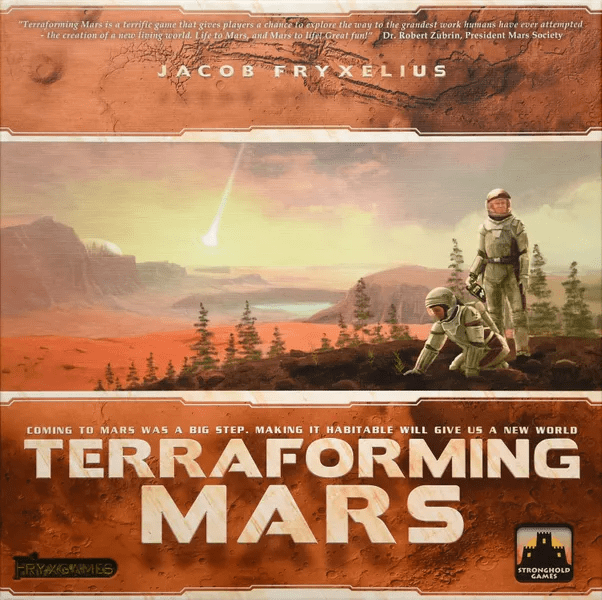
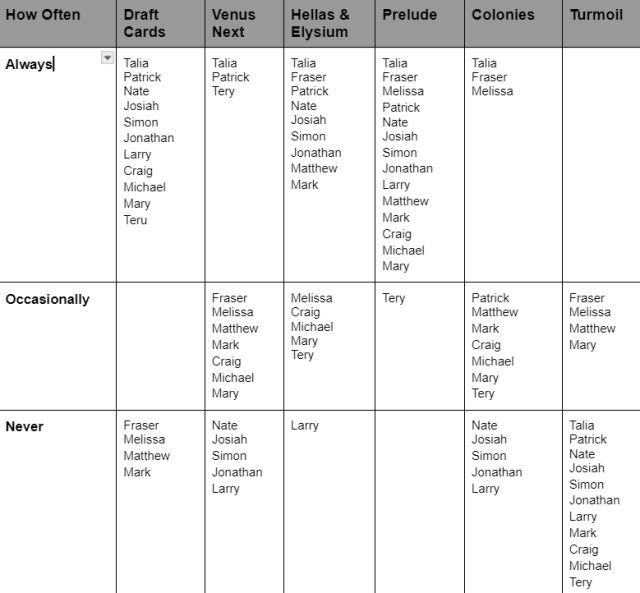
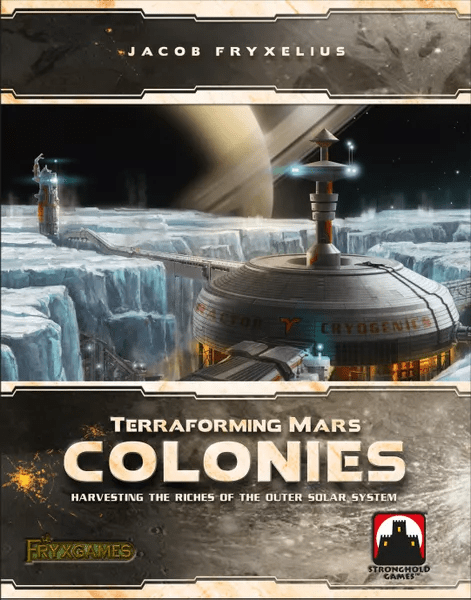
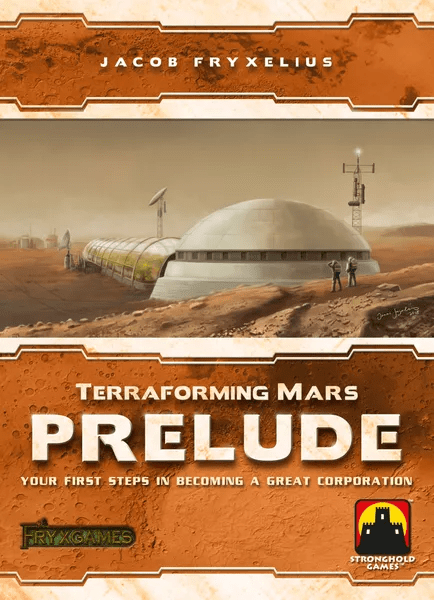

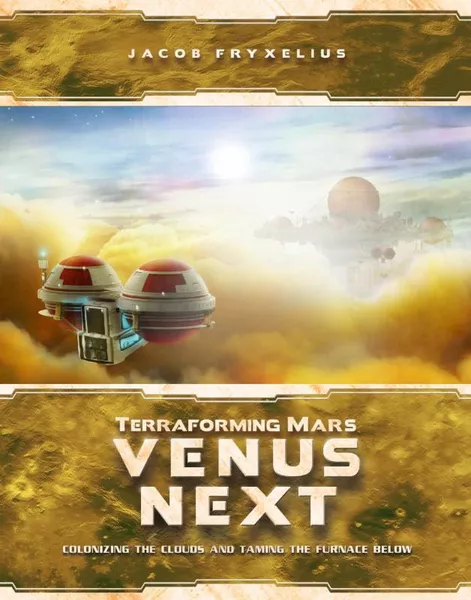
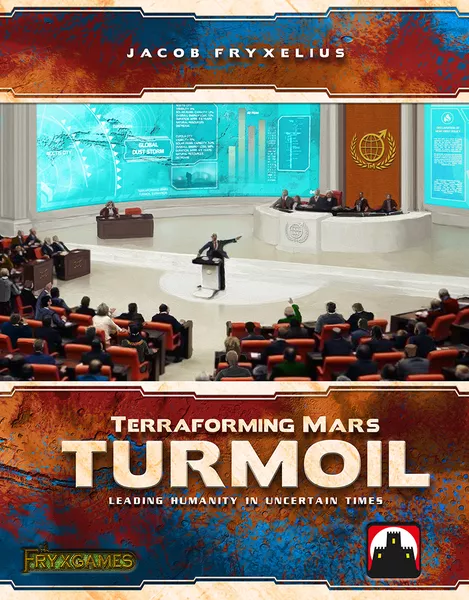
Fraser, the BGA interface does have a button to show how many people have in the possible milestones/awards categories, its just a little hard to find if you don’t know its there. There is a small icon in the milestones/awards section of the board which pops out showing this information. I didn’t realise it was there at first either!
Is that on the digital theme perhaps? I play using the cardboard theme and I haven’t found that little icon yet! And I have spent a while mousing over stuff looking. I had heard there were subtle differences, but I have always preferred the cardboard theme.
Confirmed, that button is on the digital theme, but not the cardboard theme. Thanks very much for letting me know it exists!
After the latest Steam “upgrade” deleted all my inflight games *again* including the one where I had just placed my final greeneries, my Steam buddy and I have officially migrated to BGA.